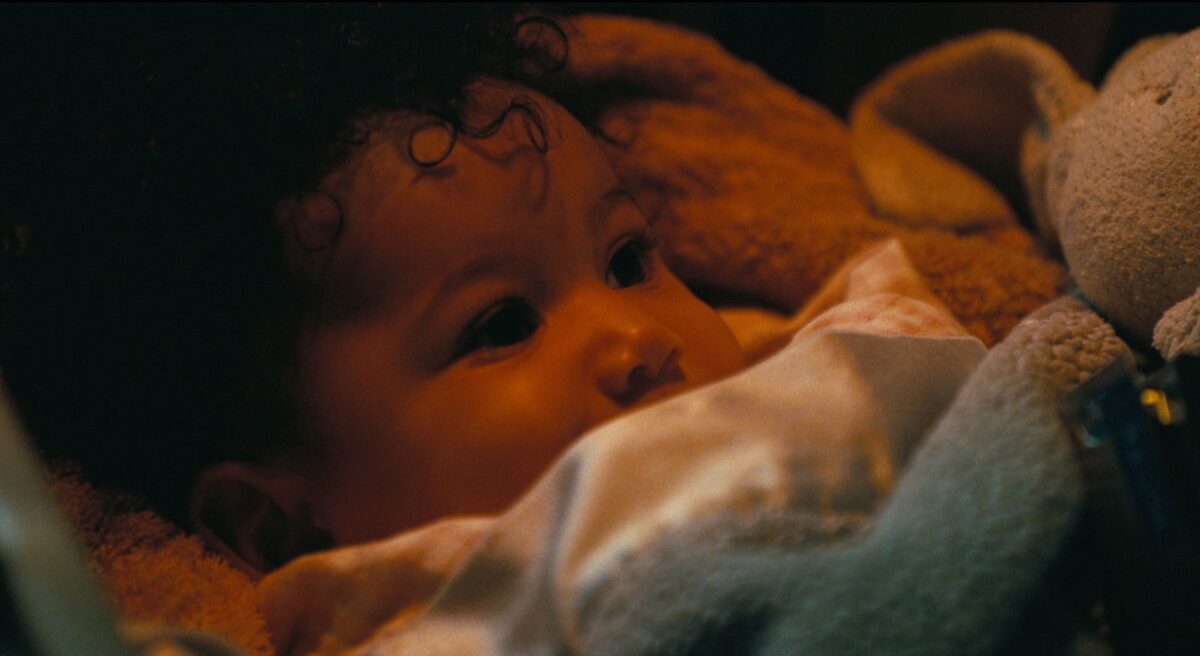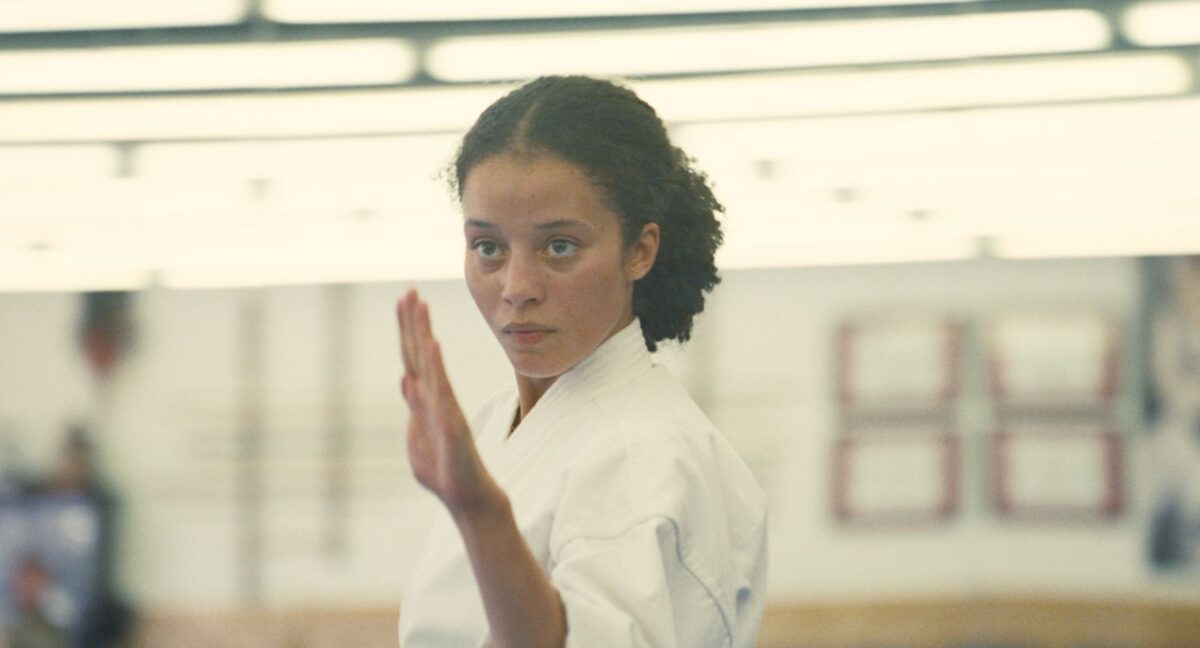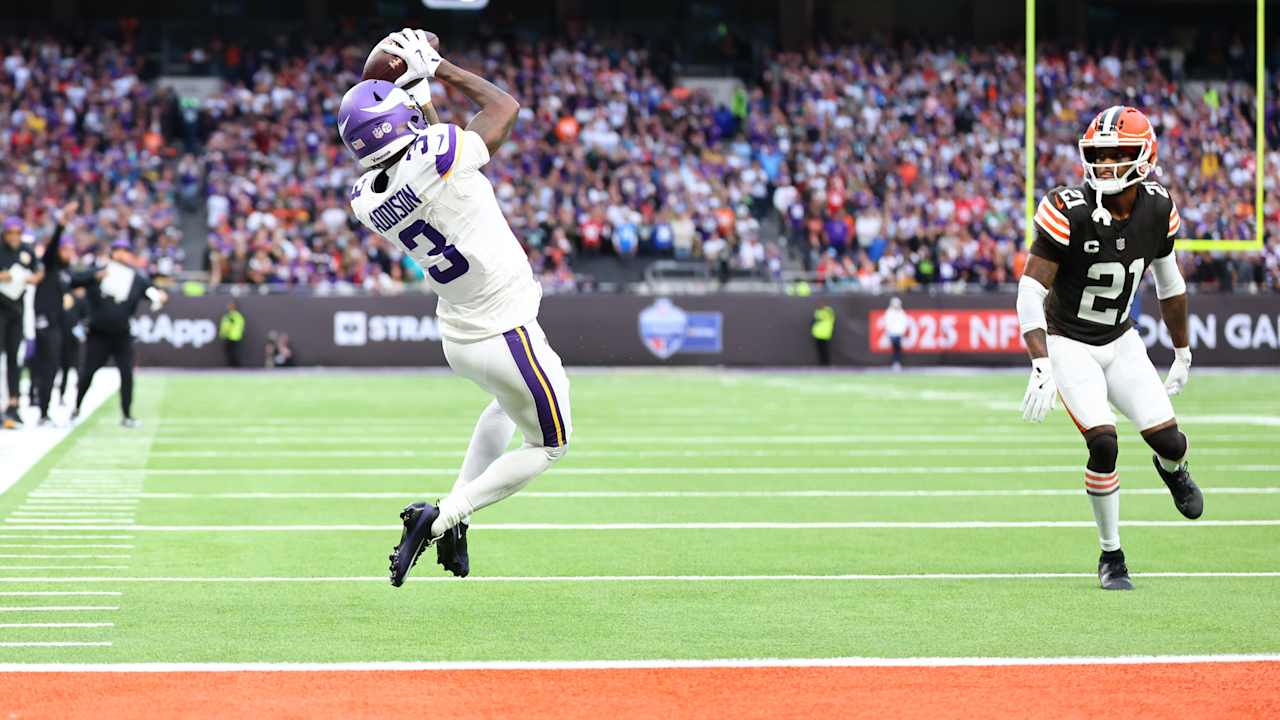How do you make a 2.5-hour movie that feels like it flies by in a third of the time? Meet editor Andy Jurgensen, a long-time collaborator of Paul Thomas Anderson, who has followed up Licorice Pizza with One Battle After Another. In a masterful cross-cutting patchwork full of intensity, emotion, and humor––often co-existing in the same scene––Jurgensen has crafted what is certainly the editing feat of the year, perhaps the decade.
With Paul Thomas Anderson’s tenth film continuing its theatrical run, I had the good fortune of speaking with Jurgensen in an extensive conversation about constructing One Battle’s incredible momentum, what he learned from test screenings, balancing tones, music moments, specific shot selections, and what it feels like to release the film at this time in the country.
The Film Stage: I’ve seen the film three times now, including IMAX 70mm, which was incredible.
Andy Jurgensen: Oh my gosh, so what are the different versions you saw?
DCP and then 70mm here at Film at Lincoln Center, and then IMAX 70mm. And then after [the New York Film Festival] is over, I’m going to check it out in VistaVision.
Oh, nice.
There’s a sense of momentum in the first act that PTA has never quite captured in his films before. Can you talk about finding that right balance and overwhelming the audience with details, but doing it in a very exciting way?
Yeah. It’s just trying to make that opening as dynamic as possible. And it’s funny: for Licorice Pizza, we were always trying to keep the momentum going and we were kind of experimenting with ways to have hard cuts to sound or chop things off to lead into the next sequence. So a little bit of that trickled over into the prologue of this as well––not fully the prologue, I think the whole movie––but the prologue specifically, there are choices to have hard cuts and throw you into the story. It just evolved. It started out longer, and you are slowly whittling it down. In the prologue, you want it to be impactful because we’re setting up Perfidia’s character. She’s such a great character. So you want to make sure that she has an impact, but also you’re realizing it is a prologue and there’s going to be a whole different movie coming after that. So it was just the balancing act of figuring out exactly what the perfect length was for that.
One of the most impactful shots of the movie is the cut from baby Willa to teenage Willa in karate class and the Steely Dan cue comes in. It tells you everything you need to know without giving you any other information about that 16-year gap. Was that always the plan? Was there really no footage shot of that 16-year gap?
Yeah, it was always the decision that it was going to be a jump from baby Willa to 16 years later, and Paul knew that he was going to use “Dirty Work” there. Even during dailies during the shoot, he was playing that song. When Bob’s outside smoking pot outside the school, he was playing that song, because that was always the idea to start that 16 years later with Steely Dan over it.
One thing I really picked up on the third viewing is how for each act break, you have this big needle drop. Steely Dan for act one into act two and then Jackson 5’s “Ready or Not Here I Come (Can’t Hide from Love)” when Bob escapes from the hospital, going into act three. Some other PTA movies have a lot more needle drops, but I feel like the ones here are extremely impactful for very specific moments. How did that come together?
[PTA] had an idea to use “Ready or Not” somewhere in the movie. When we were playing dailies on set, during production, he would sometimes use that song under the MKU [Lockjaw’s army] coming in or driving in or just for some of the action-type stuff, because we didn’t know where it was going to go. But it just worked so well when Bob’s leaving the hospital. So I remember putting that scene together and we just put it in to try it out, and it just worked so well. You kind of get a smile on your face and the audience gets energized with that song. So it works perfectly.It’s interesting you bring that up, because that totally makes sense. But we also have a motif throughout with Jonny’s score with that big orchestral hit at the beginning. And then right after the first Christmas Adventurers scene and then right before the DNA test. We also have that sort of as a way to have these dramatic hits at these points in Lockjaw’s story.
I was going to ask about those. I noticed that piece of score always hits on a close-up, really tying it to the character and a peak moment of their arc.
Yeah.
I love the action in this movie, and the Benicio del Toro sequence brings to mind Children of Men a bit––in the sense that there are much greater things happening just outside the frame that can build in your imagination––yet the audience’s perspective is within the purview of the characters. Were there ever discussions about ensuring you aren’t showing too much of the world outside of the characters’ points of view, or was that already set?

It was kind of set. There’s not really any other riot footage or anything in there that we didn’t use. But it was figuring out where we were going to place it. Because there’s a lot of cross-cutting between Bob on the phone call in his apartment, and then you’re also following Willa in the van, escaping with Deandra [Regina Hall]. And then there’s the kids being interrogated, and then there’s the MKU going to Sensei’s studio and going to the perfume shop and breaking down the door, and of the immigrants going down the stairs to escape. So it was always trying to figure out: how can we keep the tension alive with the MKU getting closer and closer and closer and getting Bob and Sensei out right before they come in? So things were moved around to create the most tension.
Photo: Andy Jurgensen
That’s great. And I need to ask about one shot in this sequence. The single shot of Bob falling off the roof, and then falling down, and getting tased and falling to the ground again. Leo has said, obviously, he used a stunt double. If you can reveal, how did you pull it off so seamlessly?
We just had different plates that we used, but we didn’t use some sort of automated camera where they sometimes do to make sure the movement was perfect. We just had a stunt guy falling through the trees and we were able to stitch that together with Leo on the ground, getting up, running around the corner, and then he basically pretended to be tased and kind of fell on a mat. Then we were able to mimic that same movement with the stunt guy and then, through visual effects, melt the two together. We couldn’t do that without a visual effect, but the whole idea was for it to be a single shot, and we got lucky that it all worked out. And I think it’s pretty seamless.
Yeah, it’s so much more impactful that it’s a single shot. We’ve talked about the momentum of the film, but because it’s so fast, the few parts where you get to breathe really stick out. Obviously there’s the Christmas Adventurer’s Club, which is fantastic. But one shot that, every single time I watch it, I’m always struck by, is with Perfidia at the witness protection home. You cut to a POV shot of the most horrendous-looking suburban development outside. It’s a perfect, concise way to tell you everything you need to know about how this is the exact opposite of the life she previously had and gives her another reason to want to go on the run. I’m curious if you and Paul talked in-depth about that shot or any other shots that might not necessarily keep the momentum up but were important to include.
Yeah, for sure. That shot is showing that she’s trapped in this suburban lifestyle, never to return to her old, previous life. It’s also right before the downfall of the French 75. She’s reflecting on how her actions are going to have repercussions. There are definitely other moments that we use to create these peaks and valleys, like the breakfast table scene between Willa and Bob––that’s played for more humor and to show their relationship––and it’s also a moment that you can breathe a little bit and enjoy this little scene; even though they’re yelling at each other, the camera’s not really moving around and you can kind of breathe. Then the later one with Bob in the car with Sensei talking about how he can’t do her hair, and it’s kind of this touching moment. It also works as this valley before the police start chasing them. We were trying to find those valleys whenever possible while still keeping the momentum. But you need to have a river of hills, if you will. [Laughs]
Speaking of hills, the final chase is so amazingly orchestrated. One sequence of shots that really struck me is the three shots of side profiles of each character as they’re driving in one direction. You kind of go boom, boom, boom to each one. There’s almost a Star Wars-esque level of cross-cutting with this sense of total forward momentum and knowing the exact order of who you should be tracking. Can you talk about that sequence, and also just to find the perfect balance of how many POV shots of the rolling hills?
Yeah, it started out long and you’re kind of going through [all the footage]. I made string outs of all the different perspectives because we had: you’re either in front of Willa’s car or you’re behind her car; Tim’s perspective where you’re behind Tim’s car with Willa in the foreground, same with Bob’s car, etc. So that’s how I organized it all. It was broken-up into three locations because there’s the beginning part when Tim’s first chasing her, and then there’s the middle, then Bob is involved, then there’s the end, which we called the Texas Dip. You’re just sorting through, trying to find the best shots, the most dynamic shots. There’s also looking through all the shots of her looking through the rearview mirror and trying to track that with all the eye movements to make sure that all tracked. It’s something that just evolves. You are just starting to piece stuff together.
We even sent a long version to the sound department so that they could give us a big version of the sound effects that we would have that we could just start playing with. Because even if we did cut it up, we could just add dissolves just to get a better idea. Then just adding Jonny’s score to it, that percussive thing adds a whole another element. Another thing is: you want to be on the verge of motion sickness to be in her perspective. But you don’t want people to get sick in the theater. So it was always trying to figure out, “Okay, how can we just get right to that line so that we are giving people this uneasiness, but it’s not so disorienting that people can’t look at the screen?” Then you just start whittling it down until it’s still as effective at the perfect length. So that’s how that came together.
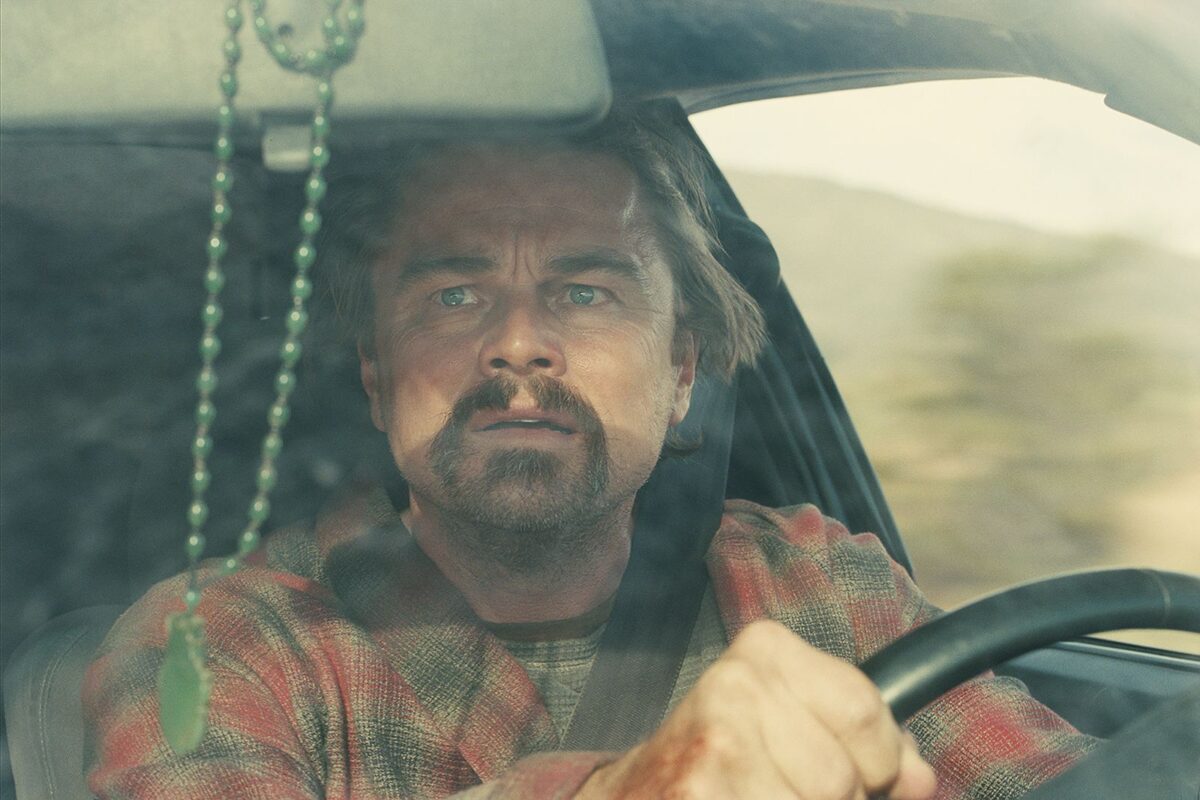
Bravo. It’s one for the history books. This is the first PTA film to have test screenings since Boogie Nights. I’ve learned a bit about the different cuts you’ve screened and I would love to pick your brain. First, generally, did that process help any of the editing decisions? Or was it more of a studio thing due to the budget of the film?
It’s a little of both, but I think it was more just confirmation to see that people were getting the humor and getting the different tones that we’re going for. I’m sure you can talk to people, but it didn’t change that much. We did trim some stuff, but that’s basic stuff, when you’re watching the movie with the crowd and you feel like, “Okay, there’s a little bit of a lull here. We can try to work on this area to make it better.” It was really more just getting confirmation that the humor was working and that people were feeling that emotional core, this father-daughter story.
[The film] also has some political relevance to what’s happening today, so we wanted to play it in different areas to see what the reaction was going to be. I think that’s not something to look down on. You do want to see different perspectives of people, of how they’re going to react. And that’s what was interesting: that wherever we screened, people enjoyed it. It was an entertaining movie to most people, so that’s when we knew, “Okay, this is working.”I know you tested an ending without the “American Girl” song, with just Willa and Leo embracing at the table after reading the letter. It’s interesting because the final ending is so perfect. What was the decision to play around with that?
Yeah, there was just a discussion of: what would it be like if we ended on the hug. So we decided to screen both versions and we went with the “American Girl” version, which is the better version, I think.
Yeah, definitely.
It’s just a more hopeful ending and a more propulsive ending for the credits. People have more of a smile on their faces.
Oh, yes. You want to see the sequel.
Yeah, right. [Laughs]
I was hoping you could squash one rumor. I read Vineland both before and after seeing the film, and there are some very light sci-fi elements to the book. Was that ever shot or made into anything?
No, there were no sci-fi elements. [Laughs]
I also heard you tested a version with an overture at the beginning, 2001-esque style. Is there any truth to that?
No, we never did that. You are getting false information. [Laughs]
I had to confirm. [Laughs] There’s this incredible section of music that starts with Sean Penn’s erection, a beat that begins and then goes through this sweeping, almost romantic orchestral score that goes through the power outage. It’s not on the soundtrack, but Jon Brion is in the credits. Is that from him?
Yes, it is. It’s a piece of music that Paul had from Jon Brion. I don’t know exactly when [it is from], but it was in the archive. We got the Pro Tools tracks from him and we were able to mix it.
So it wasn’t a track that was specifically recorded for the movie?
It wasn’t recorded for the movie, no. It was a song we licensed. It was in Paul’s archive of songs, unused music.
Wow, it’s great. One thing I love about your editing sensibilities—and it’s something you share with Thelma Schoonmaker and Martin Scorsese—is that you edit based more on emotion and momentum than conventional logic. I noticed in the recent viewing that the scene where Leo says his name is Batman, it occurs in the evening, after we’ve seen a little bit of the next morning for the characters, but it emotionally makes sense.
I guess you are kind of going back in time a little bit, but it just works better to have that throughline to follow Bob’s character from the paddy wagon to the police station to the hospital.
Yes, it works great. I always love when editing is driven more by the feeling you are getting versus having to adhere to certain narrative logic. I also love how you don’t really give any trappings of what time period or when either section is set in. I read an essay yesterday where someone was arguing the entire prologue is set in the present, so the rest of the movie is really in the future, and it’s just a worse version of our present day. People have nitpicked and seen certain iPhones in the prologue version. I’m just curious if you and Anderson ever talked about the time periods and what not to show that might give away too much of what year it is set in?
We didn’t really. I don’t want to say it’s an alternative reality, but it’s supposed to mimic our reality, but we’re not showing anything political or, like, archival footage of anything. We’re not tying ourselves to a specific time period for this movie. People have brought up that iPhone. [Laughs] It wasn’t even on our radar. We didn’t even think about that.
More than most movies, Paul Thomas Anderson’s get analyzed frame-by-frame, so you are going to get that kind of feedback.
I know people are trying to figure out the time period, so I understand that’s something you would lock on to. We’re just saying it’s a present time, but not a specific year. It’s interesting to think maybe 16 years later is the future. I didn’t really even think about that, so that is kind of interesting.
I love that you don’t narrow it in enough that people can have that interpretation. Another thing I love in this movie is the few dissolves you use. There’s the shot of Leo on the pavement dissolving into the stretch of road and one with Howard Sommerville at the diner. For a movie that has such momentum, it’s striking to see when you do slow down a bit and show the passage of time or changing locations in this way. Can you talk about that approach?
Yeah, that’s a thing when we’re building the movie––it’s just another way to transition. The dynamicness of certain sequences, you maybe want to trim the end of a shot off to create a quick cut. But then, alternatively, you sometimes want to use dissolves to stretch it out. So Paul has always liked dissolves. It’s always trying to figure out, “What would be a cool dissolve here?” If it feels right for the moment, it’s really satisfying to have it and make it work. It’s kind of fun. Sometimes I’m nitpicking the length of it exactly to get something to happen, like the lights of the car over Leo’s face or something like that. It’s a fun kind of artsy thing to get exact. [Laughs] It’s just one of the tricks.
The other thing that gives the audience total immersion is that you never use subtitles, particularly thinking of the Benicio del Toro sequence. I assume that was an early decision, but was there a discussion?
Yeah, we always wanted to do it without subtitles. I think you get it. I don’t really know Spanish, and I was able to figure it out. You’re so immersed. You don’t want to be looking down at words during all that stuff. I think you get enough information just from the actions and what Benicio says in English that it doesn’t matter. There was never pushback to put subtitles there.
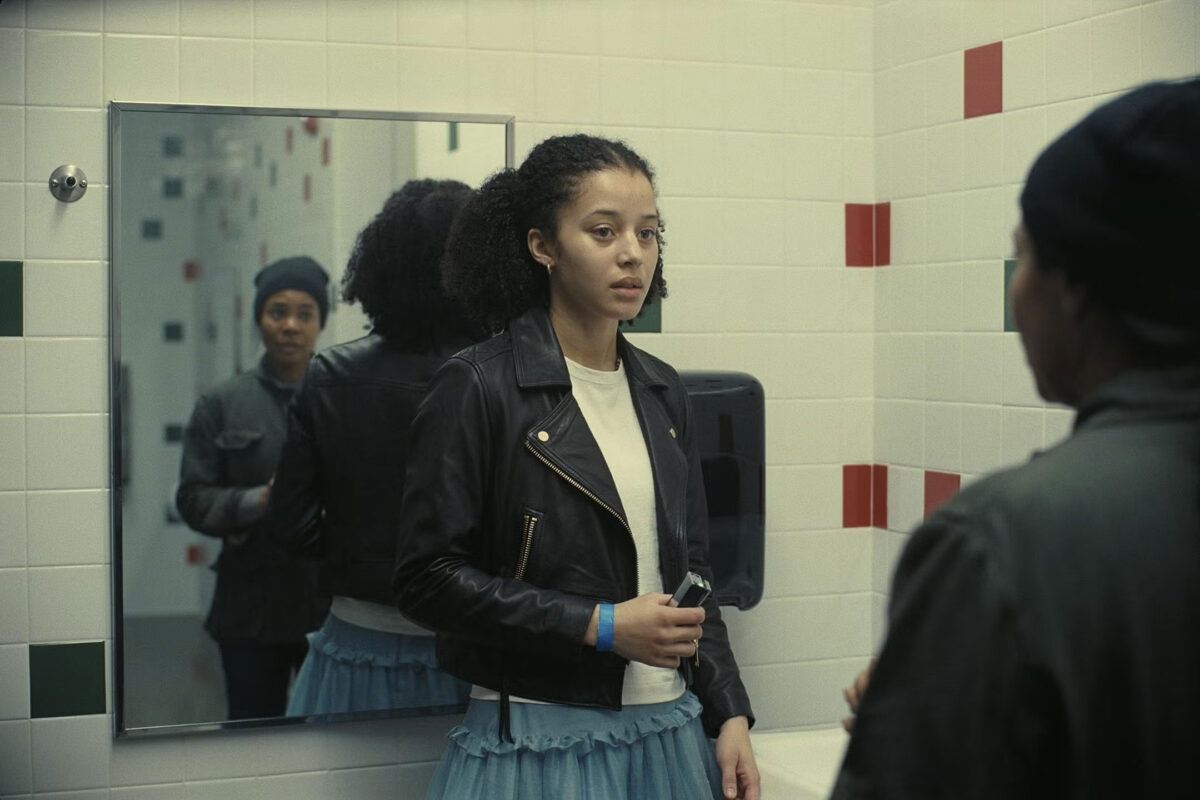
That’s great. We can talk a lot about the tone shifts in the movie, but it’s quite a feat. In my third viewing, I just started crying at the bathroom sequence since it’s such an impactful moment for Willa’s character, then teared up at the pure emotion at the end. Then there are other sequences, sometimes one scene later, where I’m hysterically laughing, and others where I’ve rarely been more tense in a movie. The Christmas Adventurer’s stuff could easily be lampooned into an SNL-type skit and be over-the-top, but it strikes a careful balance. What was it like managing all those tone shifts in the editing room?
Yeah, I think the reason the Christmas Adventurer’s scenes work so well is that the actors are just totally committed to the lines. They’re not hamming it up one bit. So when Tony Goldwyn’s character says “Christmas Adventurer’s Club” for the first time, you’re kind of taken aback. Like, “What did he say?” And then you’re kind of realizing what this is. Those actors just really committed 100%. Obviously, all the actors are amazing and they are able to really get immersed in their roles so well. Especially, Leo’s range is so good. He can do this slapstick comedy but also have these really heartfelt moments. So it’s not only these peaks and valleys with the movie, but these peaks and valleys in the performances, so you can have these grounded moments.
And same with Lockjaw, too. He’s a larger-than-life character, absurd and all sorts of stuff, but there’s also, hopefully, a humanity to him, and you do kind of feel sorry for him. He just wants to be a part of something. He just wants to find love, and it’s really sad that he has to go through all this just to try to be a part of something, which makes the whole ending so tragic. It’s just threading the needle and trusting your gut.
The “few small beers” line from Benicio del Toro has already become iconic. In the edit room, were there certain lines or sequences that you knew, “Okay, this is going to hit big.” I can now never go out for drinks with friends without saying that line.
Actually, that shot was not in some of the test screenings, and we ended up putting it in. Because you don’t really need it, but we decided to put that in during that little sequence and it got a huge laugh. It’s sort of like, “Okay, yes. This is good.” That’s the thing: when you [test] screen, it just allows you to be like, “Okay, let’s try a few more things. The audience is getting the humor. What else can we push a little bit further?” So that’s what was really good about the [test] screenings, is that we were able to find some more moments. I’m trying to think of other lines…
Everything on the telephone.
Oh, yes, obviously “Mexican hairless.” All the classic lines. [Laughs] Or even Lockjaw when he sees the DNA tests and he’s like, “Uh oh.” That kind of thing. We knew that would be a trailer moment.
I mean, I went to see it at 11am on a Tuesday at AMC Lincoln Square on IMAX 70mm and it was literally like going to a party. We were cheering at certain moments.
Oh, good. I’m happy to hear that.
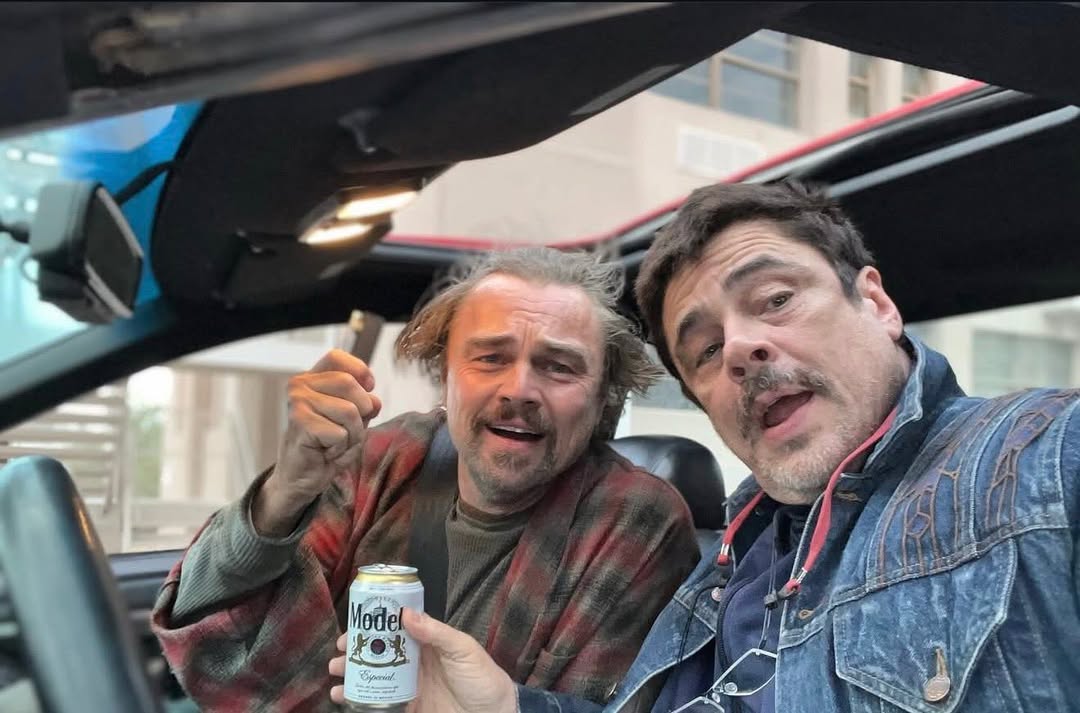
I love in the prologue the different angles you have for the heist and chase sequences. It almost feels like you are playing Grand Theft Auto with the helicopter camera angles, and then it’s really a drastic change when you cut from that to a close-up on Perfidia’s face when she’s slammed to the ground. The other cut I love is after Perfidia shoots the guard, someone from the French 75 whisks her away and then you fluidly smash cut to being whisked into the car and it’s a striking moment of forward momentum. Can you talk about the editing philosophies in that sequence?
That’s a perfect example of: how can you make this more dynamic? Okay, the camera’s attached to the car, so let’s use that swinging motion. The end of that sequence with the helicopter, we knew we wanted that really loud helicopter sound, but what’s the best way to get you out of that really quickly? Right to the guttural yell and having her face slammed to the ground. It’s just playing with ways to do it. There’s not really a lot of other shot selection for her on the ground. I think Paul always wanted to just go really close for that moment.
So we had to find the right take, but it’s in the directing and just experimenting with various ways to make it the most dynamic. Also when she’s shooting the gun with the pregnant belly, we want that to be like an impactful moment and kind of scare people. Or when the door explodes at Bob’s house. We want to get people to wake up a little bit. So there were various things that we were trying to kind of prod the audience.
When the film was in production, I remember some set photos of Tim arriving at the house for the Christmas Adventurer’s Club scene and people pieced together it was actually Ronald Reagan’s old house, which revealed an obvious Vineland connection. Did that ever come up in discussions with Paul?
Yeah, I mean, we knew it was that house. It was just kind of a funny juxtaposition, I guess. [Laughs] But I don’t think it was specifically chosen for that. It was one of the many locations and then it ended up being that house. So it’s maybe a little bit of an inside joke that people do know.
When you guys shot Anima using VistaVision, Paul said that was kind of the breakthrough moment of knowing like, “Okay, we might be able to do this for a feature.” I’m curious if there were any technical challenges that presented themselves in your work on the short that came up when shooting this?
Actually, when we did Anima, the cameras weren’t fully crystal-synced to 24 frames per second. So we had some issues where they were running too slow, so the movement looked a little fast. We realized there were some issues with the cameras. We were able to make it work, obviously, for that, but we were doing camera tests back in March of 2023, which is almost a year before we started shooting. There were a few different VistaVision cameras that we were just putting through their paces. We wanted to make sure that we could shoot long takes and just kind of put them through the wringer. To make sure that we could move the camera around and we could attach them to cars and all sorts of stuff.
We used it for casting purposes, for getting costume looks, figuring out the film stock and stuff, but also just to make sure that the cameras were going to be able to sustain. There were times when it broke down and we had to use another camera. We also shot some of the stuff in Super 35, too. There’s some sequences just because when you’re in an intimate scene, the cameras are kind of loud. So it didn’t really matter too much because we were still able to get the full aperture, so we could still do IMAX. So it was fine. We were able to film-out some of that stuff to the VistaVision negative for the final VistaVision prints. So it was all fine.
There’s also that cool tidbit where Giovanni Ribisi was a huge help to get the cameras restored. How closely did your team actually work with him?
I wasn’t quite involved with all the camera department staff, but it was always known that there was the Ribisi camera that we were using, which is one of the cameras. There’s a lot of the movie shot with that camera. You’re in New York, but here [in Los Angeles] at the Vista, we have a few things on display. One of them is that camera.
That’s awesome. This is obviously PTA’s biggest-budgeted movie and, leading up release, the die-hard fans like me were of course super-excited. But there were also a lot of rumors it could be a disaster and all this stuff. Obviously you, on the crew, knew you had something extremely special in your hands. I’m curious from your point of view––in this year-long process of knowing what you had and knowing it’s probably the best movie I’ve seen in, like, a decade––what was your perspective during that time and then the emotions you felt when it finally screened and it instantly became beloved? And obviously it might have been differently received if last year’s election had gone a different way.
Oh, there’s always going to be haters on the Internet. I don’t know why they were second-guessing. [Laughs] It is interesting that we shot the movie last year before the election and then the way it turned out, just so many things with ICE and the detention centers and everything. So it makes it very timely. As we were editing the movie, we were just realizing, “Oh my gosh, there are so many parallels.” There’s always going to be haters and people second-guessing.
And, you know, all of Paul’s movies are different. That’s why we love them. It’s always going to be an unexpected thing––each thing that we do––which makes it fun. You can’t listen to all that. You have to trust the process. [Paul’s] good about putting all that stuff out, blocking all that stuff. We are there to do the work. That’s our goal. We’re not catering to the haters on the Internet or on Twitter. [Laughs]
Yes. When it actually started screening in early September and people are embracing it, was it the way you hoped? Was there satisfaction knowing people got it immediately, or do you think there are still things there that people will discover years from now? Or a mix of both?
It’s a mix of both. It’s amazing just to realize that people are going multiple times and going to see it in different formats and seeing new things every time. It was very satisfying to have these screenings and just have people responding so well. It’s a combination of so many things––the time period––and it’s an entertaining movie. I hope it’s not trying to hit people over the head too hard with the message. So hopefully it’s thought-provoking and hopeful, and they still have some action and have comedy and we have some absurdity and social commentary. It’s trying to mix so many things and trying to be emotional, too. I think that’s the best that you can hope to be when you are making a movie like this.
One Battle After Another is now in theaters.
Source link
